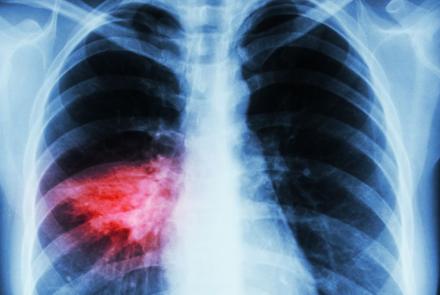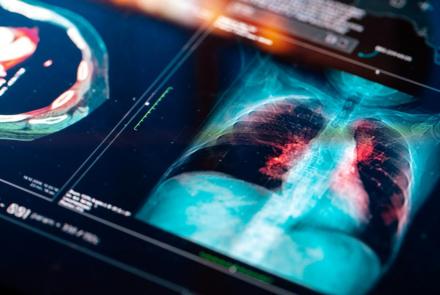Lung cancer is the second most common cause of cancer and the leading cause of cancer deaths in the United States. If you are a current or former heavy smoker, talk to your doctor about whether you should have a yearly low-dose CT scan (LDCT) of your lungs. This scan is used to detect lung cancer early, when it is more likely to be treatable, according to Liam Gross, D.O., a pulmonary and critical care physician at Highland Medical, Pulmonary Medicine Associates in Nyack.
“The low-dose CT scan is a very useful and underutilized test to detect lung cancer,” Dr. Gross said. A study called the National Lung Screening Trial studied people ages 55 to 74 who had smoked at least one pack of cigarettes daily for 30 years or more. Participants were either current smokers or former smokers who had quit within the last 15 years. The study used chest X-rays or LDCT scans to check for signs of lung cancer.
Screening with LDCT once a year for three years was found to be better than chest X-rays at finding early-stage lung cancer. LDCT decreased the risk of dying from lung cancer in current and former heavy smokers.
What is a Low-Dose CT Scan?
During an LDCT scan, you lie on a table and an X-ray machine uses a low dose of radiation to make detailed images of your lungs. The scan only takes a few minutes and is not painful.
Who Should Be Screened?
The U.S. Preventive Services Task Force recommends yearly lung cancer screening with LDCT for people ages 50 to 80 who are either
- A current smoker who’s smoked an average of a pack a day for 20 years
- A former smoker who’s smoked an average of a pack a day for 20 years who quit less than 15 years ago
Annual screening should continue until a person:
- Turns 81 years old, or
- Has not smoked in 15 or more years, or
- Develops a health problem that makes him or her unwilling or unable to have surgery if lung cancer is found.
If you are in a recommended category, most insurance plans and Medicare will cover LDCT.
Risks of Screening
There are several downsides of having lung cancer screening, Dr. Gross said. One is that LDCT can suggest a person has lung cancer when in fact no cancer is present. This is called a false-positive result. These results can lead to follow-up tests and surgeries that aren’t needed and may have their own risks. “These extra tests also create anxiety,” he said.
A lung cancer screening test can find cases of cancer that may never have caused a problem. “The screening may find cancer that’s so early and slow-growing it might never have threatened your health,” Dr. Gross said. This is called overdiagnosis, and can lead to treatment that is not needed.
The amount of radiation from an LDCT is low, but having it every year from age 50 to 80 does pose a small risk of causing cancer. “The overall risk of radiation causing cancer is less than 1%,” Dr. Gross noted.
What Happens Next?
In the majority of cases, LDCT scanning will not find anything that requires further testing. If the testing indicates the presence of a lung nodule, your doctor will discuss the pros and cons of further screening based on your specific situation, Dr. Gross said.






